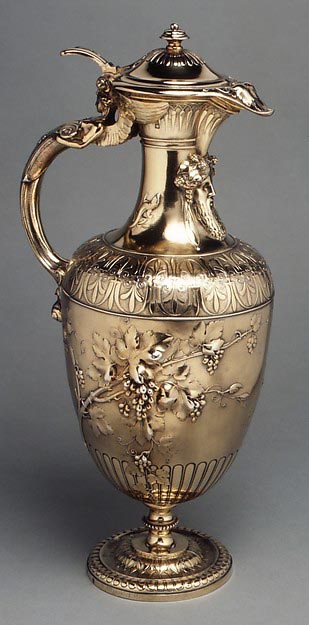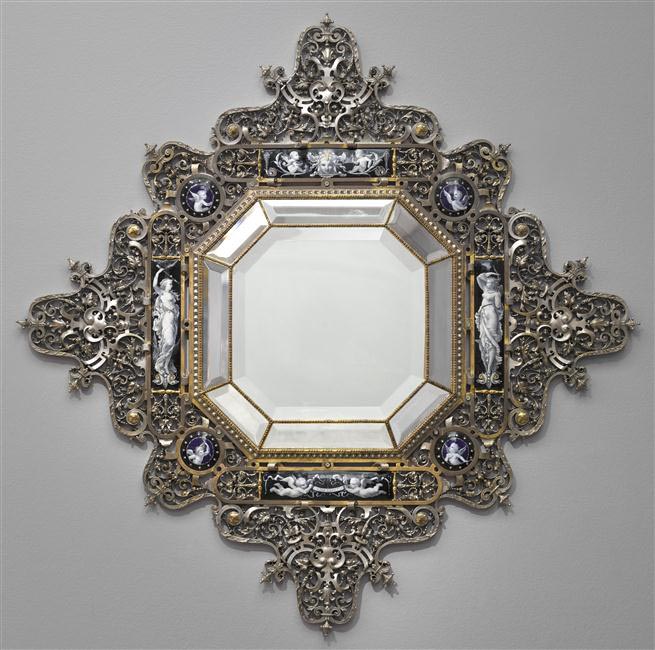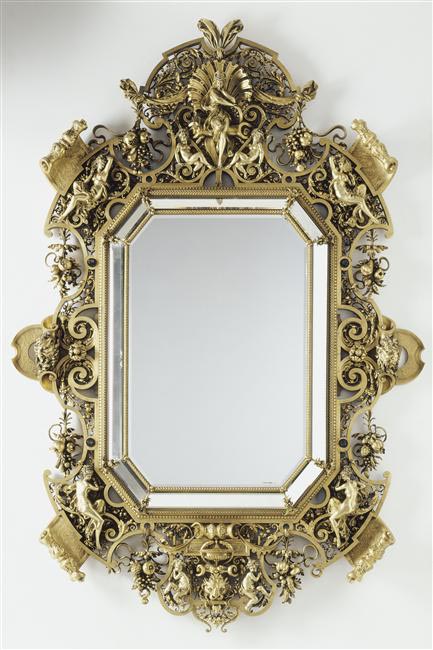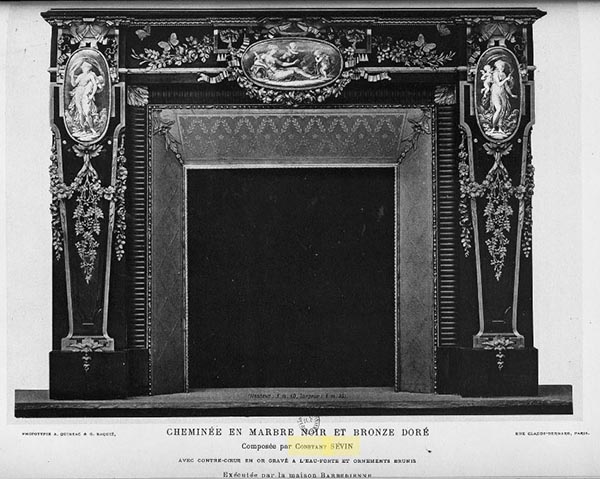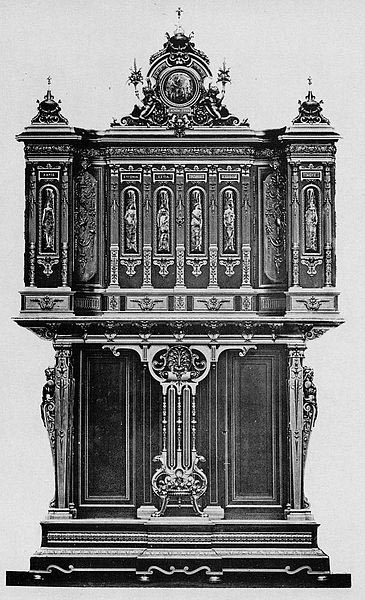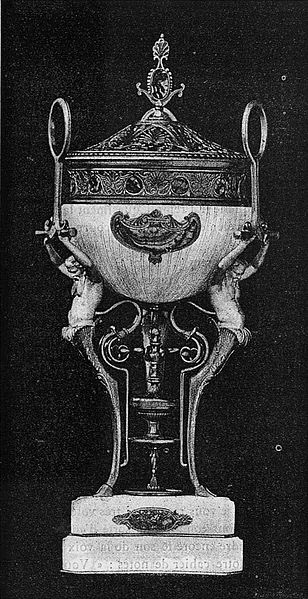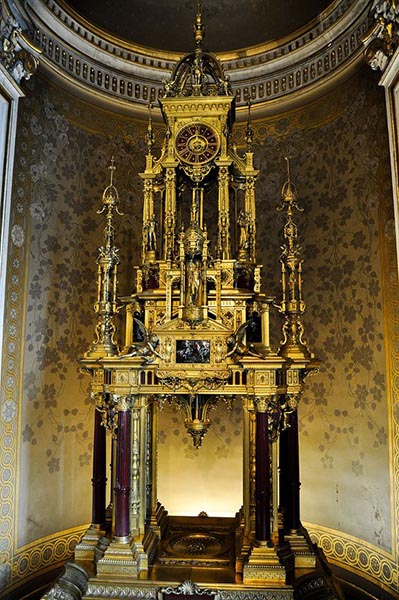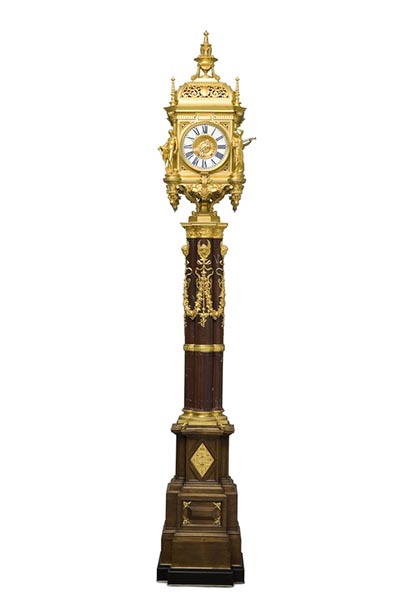Constant Sévin
Download PDFSon of traveling artists, Louis-Constant Sévin (1821-1888) became, in the second half of the 19th century, an eminent and central ornamentalist for the decorative arts. Inseparable from the Maison Barbedienne , he however provided models to many companies for all types of objects: goldsmithing, cabinetmaking, mirrors, boxes, lamps, fireplaces, vases and clocks.
Constant Sévin distinguishes himself by a wide knowledge of the ornamental motifs from very diverse traditions, especially oriental ones. Thus able to compose original works based on a real historical science, his works were very admired. His works, writes Victor Champier in 1888, with their exquisite elegance, are almost all wonders that amateurs of the future will undoubtedly be vying for with gold, and that defy time.
Sévin began his apprenticeship in sculpture with Marneuf, the author of the July Column models. Around 1840, he joined forces with Joyau and Eugène Phénix, and made first models for Denière or Froment-Meurice.
In 1848, he moved to London where there was a community of french artists gathered around the manufacturer Léonard Morel, notably Carrier-Belleuse, Fourdinois son and Désiré Attarge. It is with Leon Morel that he will realize his first pieces of anthology. Thus, in 1849, they expose the table center piece of prince Radziwill of Lithuania, at the Exhibition of the products of the French industry. But the most famous piece will be shown at the 1851 World’s Fair in London: the Henry Thomas Hope Cup, a lapis lazuli nautilus, with an enameled gold frame representing Perseus and Andromeda.
Back in Paris around 1850, Sévin provided models to Fourdinois father and the porcelain factory Jouhanneaud-Dubois. Then in 1855 began his collaboration with Ferdinand Barbedienne , who became one of the most remarkable of the century.
They were successful at the World’s Fair of 1862 , where Sévin was personally decorated for his enamel designs. Indeed, the revelation of the Exhibition are the motifs of cloisonné and chased enamels by Constant Sévin, copying ancient Oriental and Greek motifs.
With Barbedienne, he designed exceptional pieces for the princely houses, among others the King of Holland, the King of the Belgians, the Queen of England, the Kremlin, Madame de Paiva.
Ferdinand Barbedienne himself defined the art of Sevin in these terms:
"Greek art is the basis of his beliefs and the primary rule of his studies; And when he indulged in other inspirations, whether in the Renaissance genre or in the Louis XVI style, his style remained sober and pure. The knowledge of all ancient and modern ornamentation is deep. He was able to bring to completion Chinese, Hindu, Persian, Byzantine, Moorish, Gothic compositions, to the point that connoisseurs mistake their origins. "
Knight of the Legion of Honor at the World’s Fair of 1867 , he was made an Officer in 1878 when Ferdinand Barbedienne gave him his own medal. In 1878, Sévin made a monumental clock in the Neo-Renaissance style, which earned the Grand Prix to Barbedienne, a distinction the latter attributes to the merit of Constant Sévin.
Deceased in 1888, Constant Sévin is honored at the World’s Fair of 1889 , at which several of his works are re-exposed.
Bibliography :
Victor Champier, « Les artistes de l’Industrie. I. Constant Sévin », Revue des arts décoratifs, 1888.




